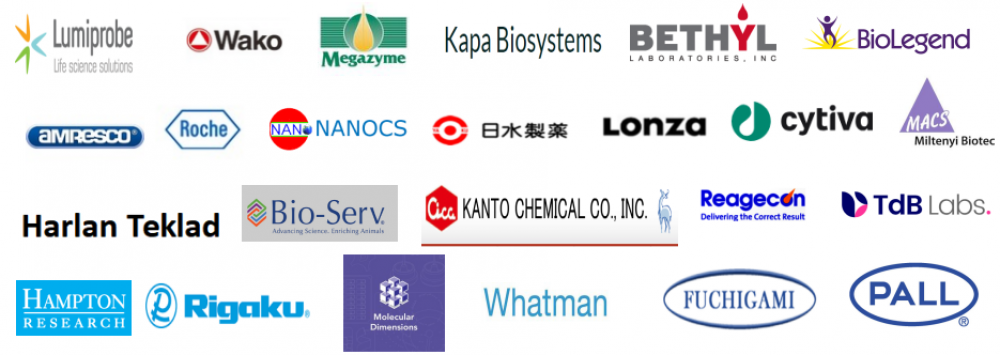Oxoid CM0866B大豆蛋白胨肉汤(RVS) RAPPAPORT VASSILIADIS SOYA PEP
品牌:Oxoid
货号: CM0866B
规格: 500g/瓶
主要用途: 微生物检测
Dehydrated Culture Media
RAPPAPORT-VASSILIADIS SOYA PEPTONE BROTH (RVS BROTH)
Code: CM0866
A selective enrichment broth for the isolation of salmonellae.
用于分离沙门氏菌的选择性富集肉汤。
| Typical Formula* |
gm/litre |
| Soya peptone |
4.5 |
| Sodium chloride |
7.2 |
| Potassium dihydrogen phosphate |
1.26 |
| Di-potassium hydrogen phosphate |
0.18 |
| Magnesium chloride (anhydrous) |
13.58 |
| Malachite green |
0.036 |
| pH 5.2 ± 0.2 @ 25°C |
* Adjusted as required to meet performance standards
Directions
Suspend 26.75g in 1 litre of distilled water and heat gently to dissolve. Dispense 10ml volumes into screw-capped bottles or tubes and sterilise by autoclaving at 115°C for 15 minutes.
Description
Rappaport-Vassiliadis Soya Peptone Broth (RSV Broth) is recommended as a selective enrichment medium for the isolation of salmonellae from food and environmental specimens. It shares with the original formulation1, the ability to exploit the full characteristics of Salmonella species when compared with other Enterobacteriaceae. These are:
1. The ability to survive at relatively high osmotic pressure.
2. To multiply at relatively low pH values.
3. To be relatively more resistant to malachite green.
4. To have relatively less demanding nutritional requirements.
RVS Broth is based on the revised formulation described by van Schothorst et al.2, and is recommended as the selective enrichment medium for the isolation of salmonellae from food and environmental specimens. It can also be used to isolate salmonellae from human faeces without the need for pre-enrichment. It is a modification of the Rappaport Vassiliadis (RV) Enrichment Broth described earlier by van Schothorst and Renauld3. The modifications to their earlier formula are:
1. The addition of di-potassium hydrogen phosphate to buffer the medium so that the pH is maintained during storage of the prepared broth.
2. Clarifying the optimum concentration of magnesium chloride 6H2O.
The two modifications are said to enhance the reliability of the enrichment broth1. Peterz et al.4 have also highlighted the importance of the concentration of magnesium chloride in the final medium.
Technique
Food and environmental specimens.
1. Prepare Buffered Peptone Water CM0509 or Buffered Peptone Water (ISO) CM1049 as instructed on the label in volumes of 225ml.
2. Prepare RVS Broth as instructed.
3. Add 25g or 25ml of the test sample to 225ml of Buffered Peptone Water and incubate at 37°C for 16-20 hours. Transfer 0.1ml of the pre-enrichment peptone water culture to 10ml of RVS Broth and incubate at 42 ± 1°C for 24 hours.
4. Subculture the enrichment broth by streaking onto plates of MLCB Agar CM0783 and Brilliant Green Agar (Modified) CM0329. Incubate at 35°C for 18-24 hours. Colonies suspected as salmonellae should be confirmed by biochemical or serological methods. Refer to standard methods such as ISO 6579:2002 +A1:20075.
Faecal specimens
no pre-enrichment needed. Add one or two 3mm loopfuls of liquid faeces (or an emulsion of faeces in saline) to 10ml of RVS Broth pre-warmed to 42°C. Incubate at 42 ± 1°C for 24 hours, and then streak onto selective agars of choice.
Storage conditions and Shelf life
Store the dehydrated medium at 10-30°C and use before the expiry date on the label.
Store the prepared medium at 2-8°C.
Appearance
Dehydrated medium: Straw/green coloured, free-flowing coarse powder
Prepared medium: Blue coloured solution
方向
将 26.75g 悬浮在 1 升蒸馏水中并轻轻加热溶解。将 10ml 体积分装到带螺纹盖的瓶子或试管中,然后在 115°C 高压灭菌 15 分钟进行灭菌。
描述
推荐使用 Rappaport-Vassiliadis Soya Peptone Broth (RSV Broth) 作为从食品和环境样本中分离沙门氏菌的选择性富集培养基。它与原始配方 1 相同,与其他肠杆菌科细菌相比,能够利用沙门氏菌的全部特征。这些是:
1.在较高渗透压下生存的能力。
2. 在相对较低的 pH 值下繁殖。
3. 对孔雀绿的抵抗力相对更强。
4. 对营养的要求相对较低。
RVS 肉汤基于 van Schothorst 等人 2 描述的修订配方,被推荐作为从食品和环境样本中分离沙门氏菌的选择性富集培养基。它还可用于从人类粪便中分离沙门氏菌,而无需预先浓缩。它是 van Schothorst 和 Renauld3 之前描述的 Rappaport Vassiliadis (RV) 浓缩肉汤的改良版。对他们早期公式的修改是:
1. 添加磷酸氢二钾缓冲培养基,以便在制备的肉汤储存期间保持 pH 值。
2.明确氯化镁6H2O的最佳浓度。
据说这两种修改提高了浓缩肉汤的可靠性。 Peterz 等人 4 也强调了最终培养基中氯化镁浓度的重要性。
技术
食品和环境标本。
1. 按照标签上的说明制备缓冲蛋白胨水 CM0509 或缓冲蛋白胨水 (ISO) CM1049,体积为 225 毫升。
2. 按照说明准备 RVS 肉汤。
3. 将 25g 或 25ml 测试样品加入 225ml 缓冲蛋白胨水中,在 37°C 下孵育 16-20 小时。将 0.1ml 预富集蛋白胨水培养物转移到 10ml RVS Broth 中,并在 42 ± 1°C 下孵育 24 小时。
4. 通过在 MLCB 琼脂 CM0783 和亮绿琼脂(改良)CM0329 平板上划线,对富集肉汤进行继代培养。在 35°C 下孵育 18-24 小时。怀疑为沙门氏菌的菌落应通过生化或血清学方法进行确认。参考 ISO 6579:2002 +A1:20075 等标准方法。
粪便标本
无需预先浓缩。将一或两个 3 毫米的液体粪便(或粪便在盐水中的乳液)加入 10 毫升预热至 42°C 的 RVS 肉汤中。在 42 ± 1°C 下孵育 24 小时,然后在选择的选择性琼脂上划线。
储存条件和保质期
将脱水培养基储存在 10-30°C 并在标签上的有效期之前使用。
将准备好的培养基储存在 2-8°C。
外貌
脱水介质:稻草色/绿色、自由流动的粗粉
制备培养基:蓝色溶液
Quality control
| Positive control: | Expected results |
| Salmonella Typhimurium ATCC® 14028* | Good growth |
| Negative control: | |
| Escherichia coli ATCC® 25922 * | Inhibited |
* This organism is available as a Culti-Loop®
Precautions
RVS Broth should not be used if Salmonella Typhi is suspected.
In order to achieve optimum recovery it is recommended that the enrichment broth is incubated at 42 ± 1°C.
References
1. Rappaport F., Konforti N. and Navon B. (1956) J. Clin. Path 9. 261-266.
2. van Schothorst M., Renauld A. and van Beek C. (1987) Food Microbiology 4. 11-18.
3. van Schothorst M. and Renauld A. (1983) J. Appl. Bact. 54. 209-215.
4. Peterz M., Wiberg C. and Norberg P. (1989) J. Appl. Bact. 66. 523-528.
5. BS EN ISO 6579:2002 +A1:2007: Microbiology of food and animal feeding stuffs Horizontal Method for the detection of Salmonella species.
